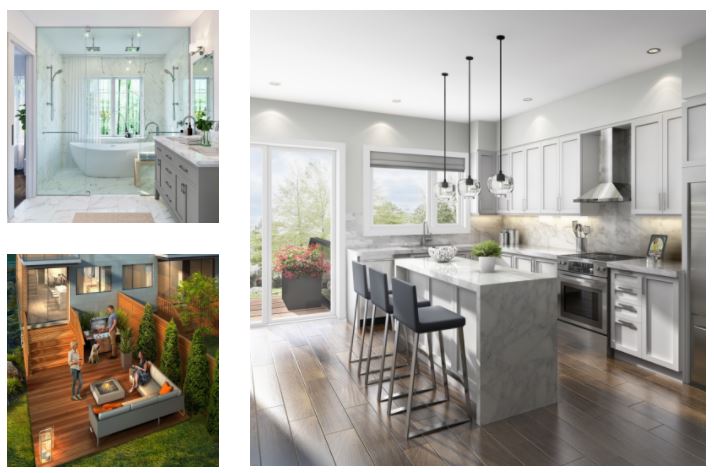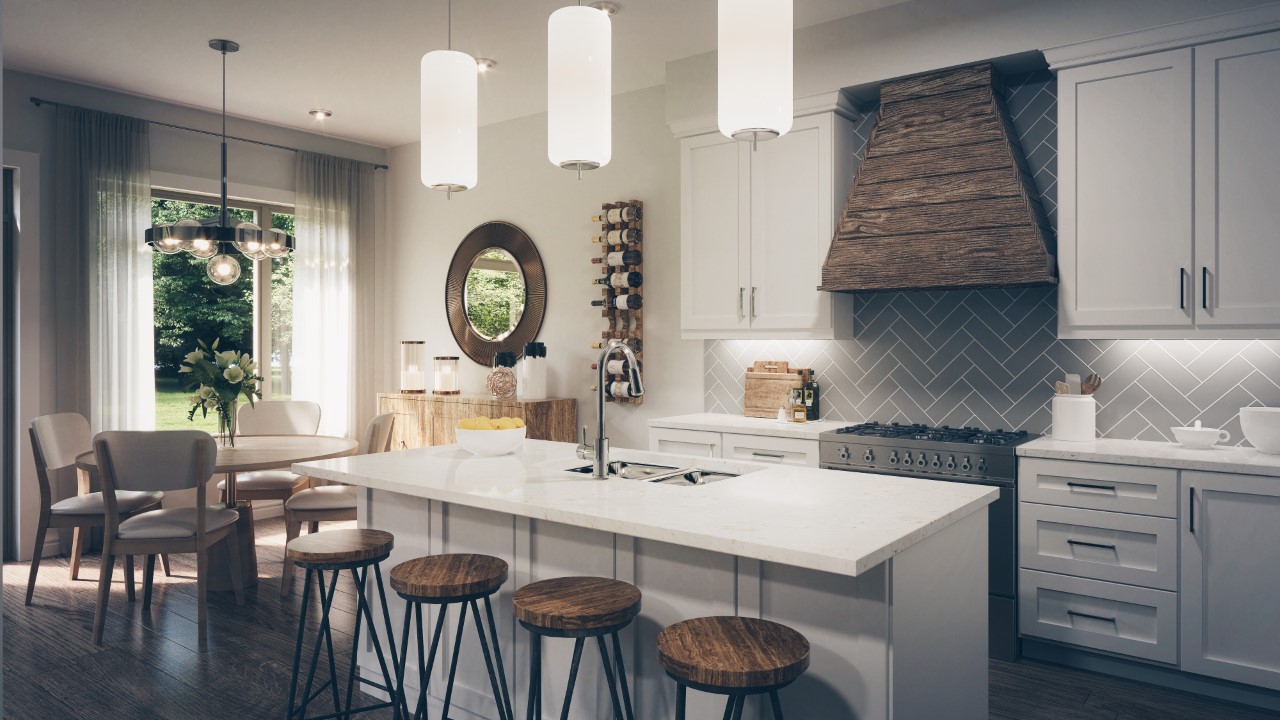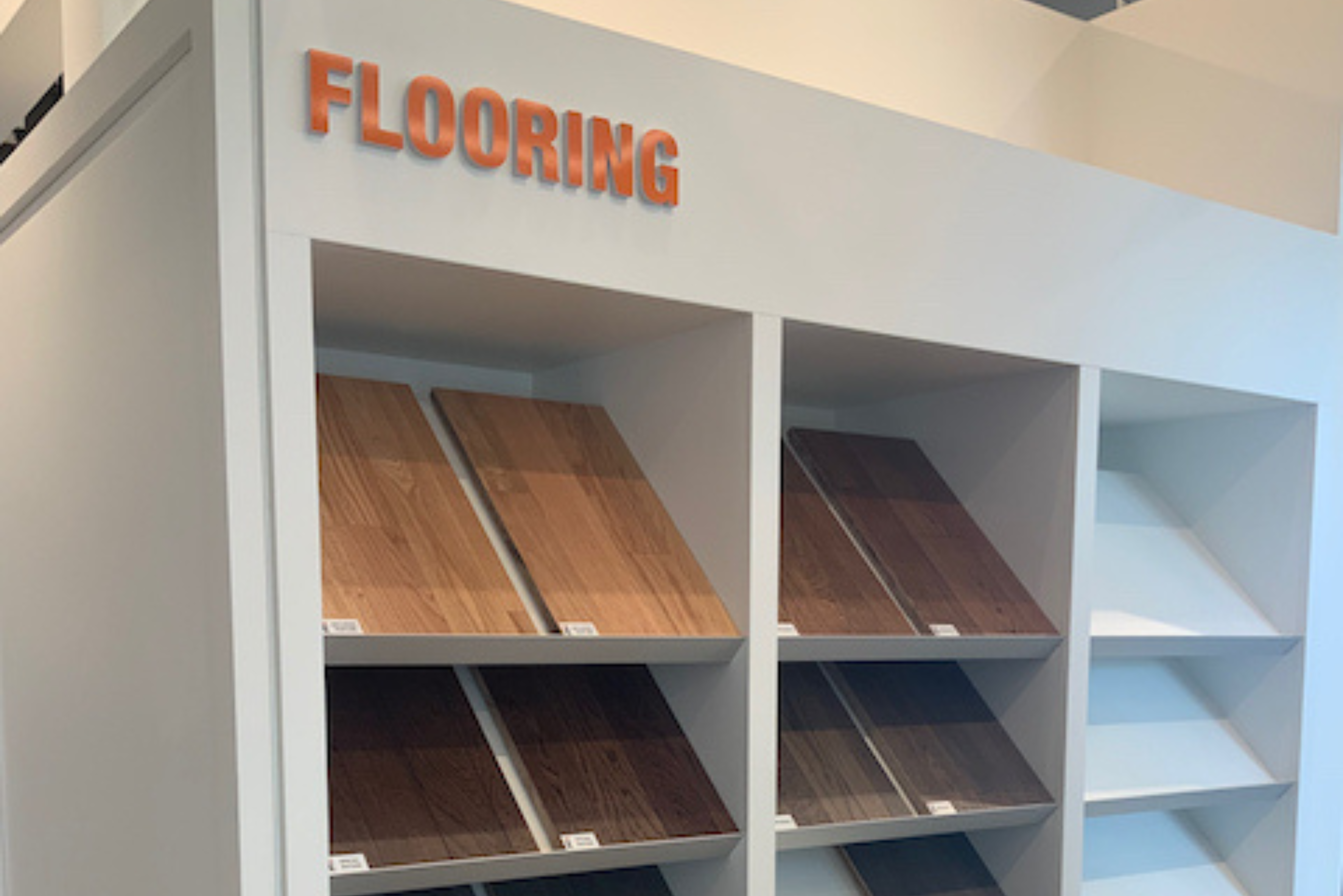2020 was the year of virtual interior design, and the trend isn’t slowing down in 2021. I had done virtual model home interior design for new home builders and condo developers many times before in my career, but I’ve done more than ever during the past year.
This influx of virtual design work has made me realize the vast misconceptions and misunderstandings that many people have about the process of virtual interior design. So today, I’m breaking down the truth about designing virtual model homes.
Here are 3 things you didn’t know about designing virtual model homes. Whether you’re a builder or developer hiring an interior designer to do virtual renderings or a fellow interior design professional quoting on this work, these are essential things to know before you dive in!
#1: No, it’s not less work
A virtual model home takes the same amount of effort – or more on the designer’s side – to design. I’ve noticed quite a recurring misconception on this. A lot of the time, new home builders and condo developers expect virtual interior design to be quick and easy. There’s no furniture to buy, and no lighting to install. There’s no installation to schedule, and no cleaners to hire. Interior design has never been so easy. Right? Wrong, I say.
What I often hear from clients who are new to the process of virtual interior design is, “The renderer will do that.” It’s not so simple. The renderer needs to understand and be directed as to what he or she is building.
#2: Every single thing has to be selected and chosen
Designing for a virtual rendering is just like building a real house or model in terms of what we have to do as designers, because we still have to make a great deal of specific selections with great care. Many virtual renderings aren’t just 2D these days – they’re 3D walkthroughs or fly-through, which means that it’s not just one view that people are seeing. That means every detail needs to be considered. I’m talking baseboards, doors, hardware, light fixtures, bathtubs, toilets, sinks, faucets – every single thing has to be selected and chosen. Virtual interior design is a lot more than just picking the finishes and moving along.
That being said…

#3: The results can be absolutely jaw-dropping
Virtual renderings have come SUCH a long way, and today’s virtual renderings put the ones of even just a few short years ago to shame. Many are incredibly life-like and realistic, and produce an absolutely stunning end result that’s sure to excite, inspire and impress home buyers.
With the pandemic stretching on indefinitely as COVID-19 cases in Ontario continue on an upward trend – and with a lockdown that’s running for at least another two weeks and possibly longer – many people want to stay home and stay safe. Virtual interior design reaches people where they already are – online. It’s a great marketing piece, and the results can be truly impressive. Since it’s such a great tool, make sure you understand it and that you know how to truly optimize the process.
What are your thoughts about designing for virtual reality or virtual renderings? Do you agree or disagree with these points, and is there anything I’ve missed? Find me on Facebook or Instagram and let me know!





